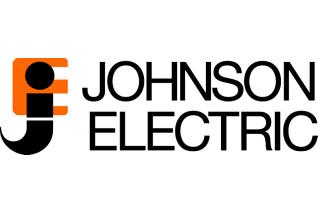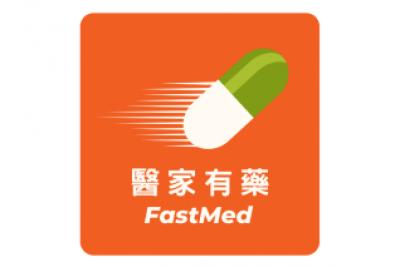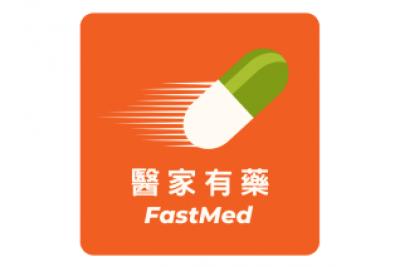Johnson Electric reports results for the year ended 31 March 2023
Administrator Sabtu, 20 Mei 2023 09:57 WIB

Highlights of FY2022/23 Results
For the financial year ended 31 March 2023, total sales were US$3,646 million - an increase of 6% compared to the prior year. Excluding the effects of foreign currency movements and acquisitions, underlying sales increased by 11%
Gross profit totalled US$716 million - an increase of 2%
EBITA, adjusted to exclude non-cash foreign exchange rate movements and restructuring charges, decreased by 10% to US$220 million or 6.0% of sales (compared to 7.1% of sales in FY21/22)
Net profit attributable to shareholders totalled US$158 million - an increase of 8% compared to the prior year
Underlying net profit, adjusted to exclude non-cash foreign exchange rate movements and restructuring charges, totalled US$148 million - a decrease of 10%
Free cash flow from operations totalled US$215 million (compared to a cash outflow of US$132 million in the prior year)
A recommended final dividend of 34 HK cents per share (US 4.36 cents), which combined with the interim dividend paid, will amount to a 50% increase compared to total dividends declared for the prior year
As of 31 March 2023, cash reserves were US$409 million and the ratio of total debt to capital at year end was 16%
HONG KONG SAR - 18 May 2023 - Johnson Electric Holdings Limited ("Johnson Electric"), a global leader in electric motors and motion subsystems, today announced its results for the twelve months ended 31 March 2023.
Group sales for the 2022/23 financial year totalled US$3,646 million - an increase of 6% compared to the prior year. Excluding the effects of foreign currency movements and acquisitions, underlying sales increased by 11%. Net profit attributable to shareholders totalled US$158 million or 17.33 US cents per share on a fully diluted basis. Underlying net profit, adjusted to exclude non-cash foreign exchange rate movements and restructuring charges, was US$148 million, a decrease of 10% compared to the prior year.
Sales Performance
The Automotive Products Group ("APG"), Johnson Electric's largest operating division, achieved sales of US$2,914 million. Excluding currency effects and an acquisition in the prior year, APG's sales increased by 16%. This compares favourably to the estimated 9% increase in global light vehicle industry production volumes over the same period. APG's sustained above-market growth reflects a product portfolio that is focused on the key long-term technology trends transforming the industry. This includes innovative technologies that enable electrification, reduce emissions, enhance safety and comfort, and heat, cool or lubricate critical vehicle systems.
The strength of APG's sales extended across every major geographic region. In the Americas, sales increased by 19% on a constant currency basis compared to light vehicle production volume growth of approximately 13%. In Europe, constant-currency sales grew by 17% compared to an 10% rise in the region's vehicle production. And in Asia, our constant-currency sales increased by 13% compared to a 8% increase in vehicle production.
Throughout FY22/23, the automotive components sector as a whole continued to wrestle with supply chain constraints, particularly shortages of semiconductors, as well as the disruptive effects of pandemic-related lockdowns in China and Russia's invasion of Ukraine. As a consequence, in most markets, OEMs and their dealerships have been unable to meet pent-up consumer demand for new cars for over two years and total industry output remains well below pre-pandemic levels. However, as supply chain problems have gradually eased, the ability to respond to this previously unmet demand has underpinned a large part of the industry's recent growth trajectory.
The second key factor driving the market has been the acceleration of the shift to New Energy Vehicles. Nowhere has this been more evident than in China, where for the month of March 2023 pure battery electric cars and plug-in hybrids accounted for 34% of new passenger car sales. In Europe, demand for NEVs varies by country and remains sensitive to the impact of government subsidies.
Nonetheless, plug-in vehicles already amount to around one in six new car registrations. North America has been a laggard in the take-up of NEVs up until now, partly due to concerns over driving range and charging availability. This appears set to change as U.S. OEMs have brought forward the planned large-scale electrification of their vehicle fleets and the federal government has granted a number of tax credits and other incentives to support EV purchases and investments in battery manufacturing and charging infrastructure. While the auto industry's transition away from the internal combustion engine represents a watershed event for the majority of OEMs and component suppliers, the investments that Johnson Electric has made in new products specifically-designed to support this transition places APG in a particularly strong position to continue to gain share in the years ahead.
The Industry Products Group ("IPG") achieved sales of US$732 million, which represented 20% of total Group sales. Excluding the effects of currency movements and an acquisition, IPG's sales decreased by 7%.
The sales weakness that IPG experienced over the financial year reflected the combination of two main factors. First, the Covid-19 pandemic had led to an historically unprecedented surge in demand for many of the "home-centric" consumer product applications that IPG serves.
However, once pandemic restrictions began to lift - especially in North America and Europe - consumer expenditure reverted back to their pre-pandemic pattern, including proportionally higher spending on services and travel. As a result, IPG's sales experienced a negative "bullwhip effect" whereby reduced demand from consumers led to retailers, followed by their suppliers, moving to cut-back on orders and sharply reduce inventory levels.
The largest impact of these reductions during FY22/23 was felt by IPG's Asia region, which serves a number of contract manufacturers whose primary end markets are North America and Europe.
The second factor having a negative impact on IPG's sales has been the heightening concerns among consumers regarding inflation, higher interest rates, and job security - which tends to result in tighter expenditure on discretionary consumer goods and reduced activity in the housing sector.
An important feature of IPG that helps to mitigate the impact of periods of weaker consumer sentiment is the sheer diversity of its end-product applications and breadth of its customer base. Therefore, whilst the division continues to face headwinds in several markets as fears of a global recession increase, it is also experiencing strong demand in a number of attractive strategic growth segments including medical devices, robotic applications, window automation, ventilation, and semiconductor manufacturing equipment.
Gross Margins and Operating Profitability
The Group's gross profit was US$716 million – an increase of 2% compared to the prior year and, as a percentage of sales, represented a decrease from 20.4% to 19.6%. The erosion of gross margins was primarily due to higher raw material costs, unfavourable foreign exchange rate movements, and a reduction in the profitability of commodity hedging contracts that were only partially offset by sales volume growth, price increases, labour reductions, and other operating cost savings.
Reported earnings before interest, tax and amortization ("EBITA") was US$232 million (compared to US$222 million in the prior year). EBITA adjusted to exclude non-cash foreign exchange rate movements and restructuring charges, was US$220 million or 6.0% of sales (compared to 7.1% in the prior year).
Net Profit and Financial Condition
Net profit attributable to shareholders increased by 8% to US$158 million or 17.33 US cents per share on a fully diluted basis. Underlying net profit, adjusted to exclude non-cash foreign exchange rate movements and restructuring charges, was US$148 million compared to US$165 million in the prior year.
Cash generation improved sharply with free cash from operations amounting to US$215 million, largely due to lower working capital and capital expenditure. Johnson Electric's financial condition remains sound with a total debt to capital ratio of 16%.
Hashtag: #JohnsonElectric






